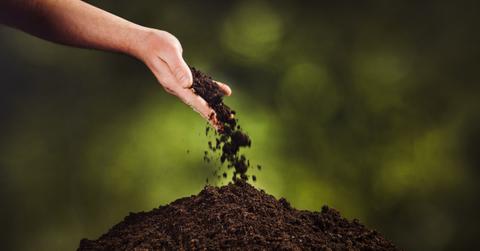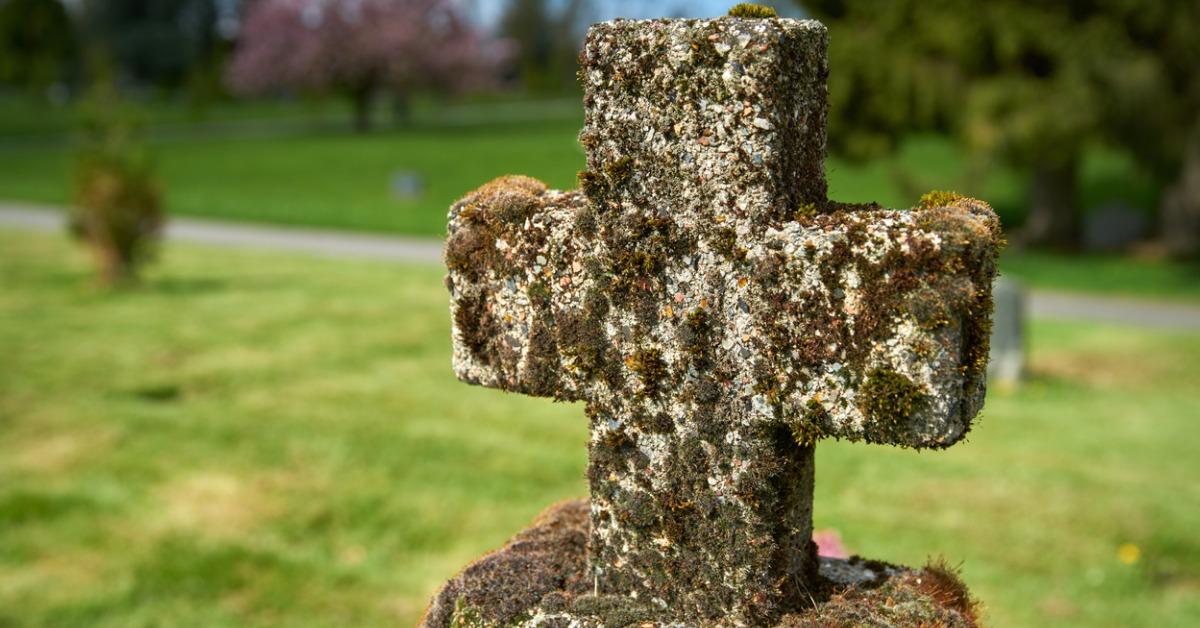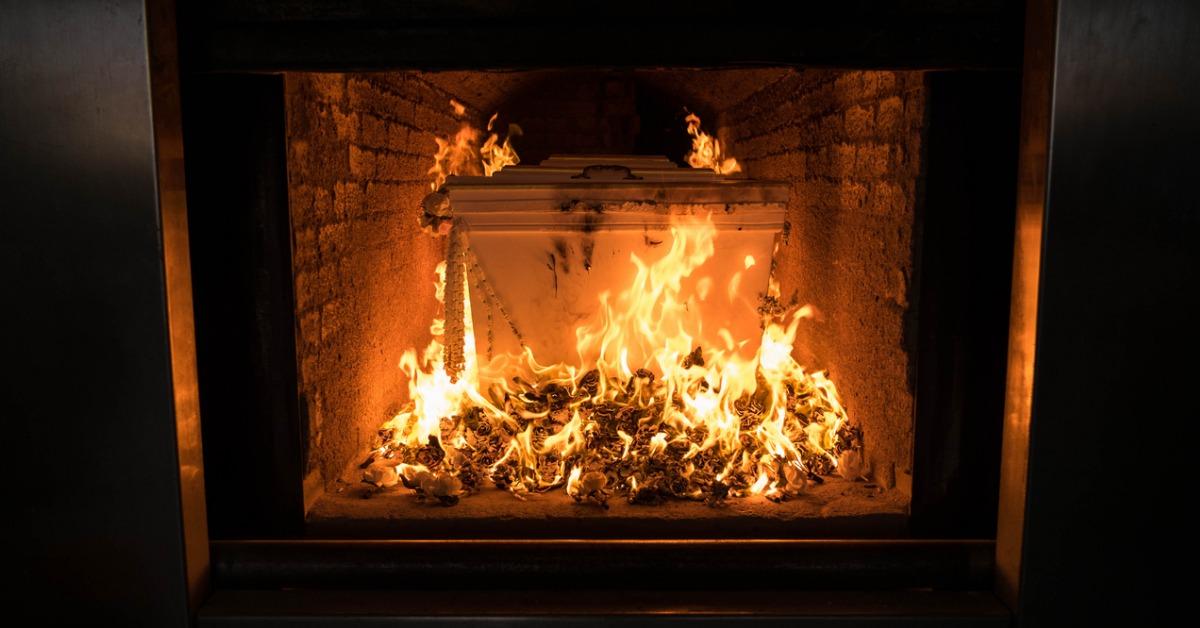What Is the Most Eco-Friendly Burial Method? Here Are a Few Options
Updated March 2 2023, 8:56 p.m. ET

As much as you try to live a healthy, vegan, low-impact lifestyle, chances are that the common methods of body disposal, say traditional burial or cremation, are not going to be nearly as eco-friendly as your choices were in life. Luckily, there are plenty of ways to “fight the good fight” even after you have shuffled off this mortal coil.
Many of these natural interment methods have risen to prominence in recent years, and though many may find them unusual, they are becoming much more streamlined and accepted by society at large. Green burials also tend to be more affordable than your average traditional burial or cremation. Here are some of the best ways to ensure what remains of you is buried in with the most eco-friendly methods in mind.
What are the environmental effects of traditional burials?
If you think that cremation is the best way to go, you are sorely mistaken. According to the Natural Death Centre, a single cremation uses about as much gas and electricity as a 500-mile road trip. This process also ends up emitting approximately 250 pounds of carbon dioxide. That’s an astonishing amount of CO2, especially from one non-living person.
Traditional burial isn't much better. It might actually be worse, in fact, at least from an environmental perspective. According to Northwoods Casket Company, in the U.S., casket burials use an estimated 100,000 tons of steel and 1.5 million tons of concrete annually. In addition, some 77,000 trees and 4.3 million gallons of embalming fluid are also used each year in the U.S.
The breakdown of these materials, specifically the carcinogenic embalming fluids, can then leach into the ground and pollute the earth even more. All in all, these are not the best methods for disposing of a body.
What are some of the best eco-friendly burial methods?

Here's a look into some of the more eco-friendly ways of returning your body to the earth.
What are mushroom burial suits?
Mushrooms and other types of mold, bacteria, and fungi love to feast on decomposing flesh. Unfortunately, the formaldehyde and other embalming fluids commonly used in traditional burials prohibit this from happening. Coeio founder Jae Rhim Lee has come up with a way to eliminate those chemicals altogether.
Coeio's revolutionary mushroom burial suit is essentially a black shroud, lined with special mushroom spores that are meant to be worn after a person died. The mushrooms are specifically trained to devour dead human tissue, which they do, thereby recycling our bodies rather than using them to further pollute the earth.
Similarly, Netherlands-based company Loop invented the Living Cocoon, a mushroom-based coffin that enriches the earth as it decomposes.
Can you get buried on a body farm?
In the early 1970s, anthropologist William Bass wanted to study how bodies decompose naturally. He accomplished this by using cadavers, which were placed on a “farm” in a wide array of decomposition scenarios. Bodies were placed in swamps, in the grass, in the sun, in the trash. They were eaten by crows, maggots, and vultures. And now you too can be a part of the adventure after you die!
Freeman Ranch at Texas State University has one of the largest body farms in the country. Here, students, scientists, and would-be detectives use dead bodies to study criminal science, microbes, and thanatology, the study of death. This option will save your loved ones money, enhance scientific research, and return your body to the natural world in a very natural way.

Can I be recomposted? Human composting is growing in popularity.
The art of human composting, aka body composting, recomposition, or natural organic reduction, is a similar method of green burial to that of donating your remains to a body farm. The idea was hatched by Seattle-based architecture grad Katrina Spade in 2012. She posited that she could create a space for returning bodies to the earth naturally, without the need for steel, concrete, or carcinogens.
Spade's answer was to compost humans as a farmer would compost livestock, leading her to found her company Recompose, which uses wood chips, moisture, and air to expedite the natural process of decay and turn human remains into nutrient-rich soil. As of March 2023, the process of human composting is legal in six states.

What is a green burial?
Green burials are just more variations on the theme of organic burials. In this instance, the graves are dug by hand, and the caskets are biodegradable and made of either wicker or even an unbleached burial shroud. There is no cement plot, only the earth, reclaiming what was once hers. Many green burial grounds can even act as wildlife refuges as well, making them important for conservation. The plots in these green graveyards also tend to be far cheaper than those at conventional graveyards.
What is a sky burial?
Now, we move on to the more unusual burial options in our organic arsenal. This particular method, used in Tibet and other areas nearby, is called a sky burial. It was created by Buddhists, who practice the ritual as a means to encourage good karma.
In a sky burial, people take the bodies of their deceased to the charnel grounds where local vultures come to feed. This allows the remains to be repurposed back into the food chain in a very visceral way. And while the application of this ritual is based on the belief that the dead will then return to the universe without any of their earthly baggage, it’s also quite practical in a place where digging a grave is particularly difficult.

What is aquamation?
Aquamation, otherwise known as water cremation or alkaline hydrolysis, is a truly unique burial method — and one that the late Archbishop Desmond Tutu chose. It works like this: The body is placed in a stainless steel vessel filled with a solution of 95 percent water and 5 percent potassium hydroxide or sodium hydroxide. This mixture, combined with rushing alkaline waters and temperatures around 350 degrees Fahrenheit, causes the body to dissolve. If this were to happen in say, a stream, the process would take months; in the pod, it can be done in about 20 hours.
All that’s left in the end is a partial skeleton, which is ground up into a white pearly, powder and given to the person’s loved ones. As of March 2023, it's legal in 28 states. Advocates of the process indicate that it only emits about a fifth of the carbon dioxide belched out by traditional cremation.
What is a tree burial?
A burial company called Transcend is hoping to popularize the process of burying deceased people and pets as trees after they die. Choosing a tree burial, which involves burying a body wrapped in a biodegradable flax linen, sequesters nearly 6 times more carbon dioxide than a cremation emits.
"What’s so special about Tree Burial is that it’s not a new practice – it’s a modernization of ancient methods of traditional burial," founder Matthew Kochmann told Green Matters in 2022. "It’s a natural burial in its purest form, with the added environmental, economical, and personal benefits that we’ve developed using modern tools."
This article, originally published on Nov. 12, 2020, has been updated.